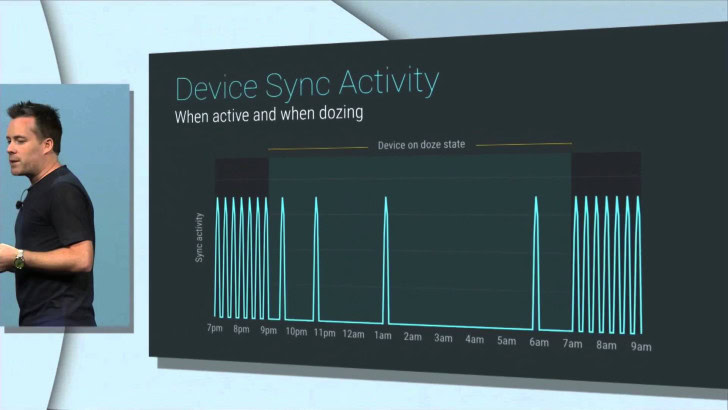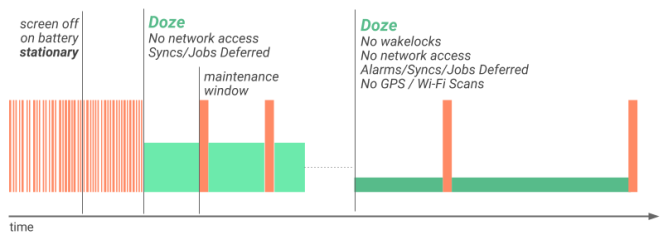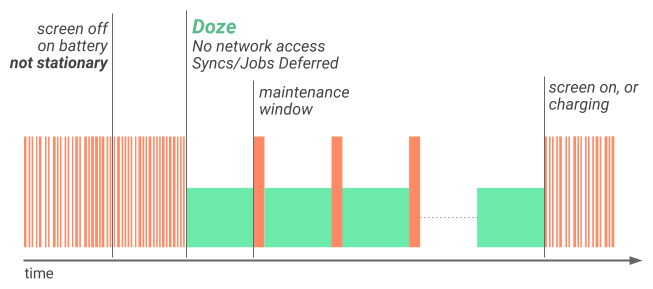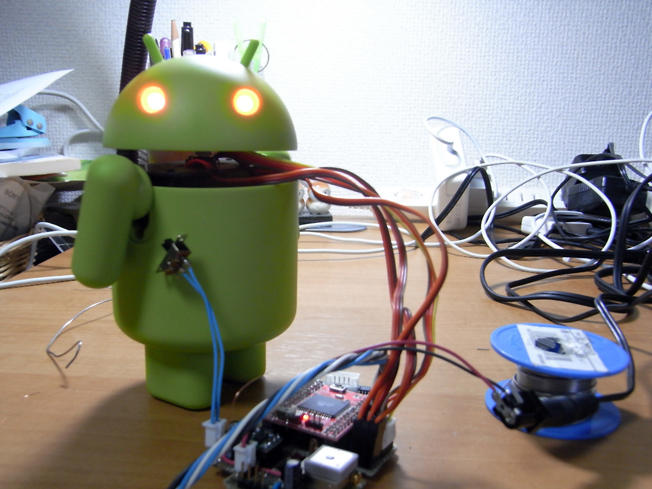Affiliate links on Android Authority may earn us a commission. Learn more.
Doze gets much dozier [Diving into Android N]

So as you might have gathered, strives in the whole battery area of technology have not been quite as robust as we might have hoped. Although our processors are getting consistently leaner and meaner, lithium-ion batteries haven’t changed a whole lot over the years. That’s why users were elated with Android Marshmallow’s new Doze feature, which allowed their devices to go into incredibly low power usage modes when the screen was off and it was stationary. With Android N, this Doze feature is getting a serious upgrade that makes it more practical than ever before.
The first thought you might have had about the Doze feature was, “Yeah, that’s great and all, but how often is my phone truly stationary?” Even a person sitting in an office job tends to jostle and shift enough that the phone in their pocket wouldn’t be able to effectively take advantage of this perk. To really benefit, they would have to take the device out of their pocket and set it on the desk. A natural practice for some, but an act as heinous as walking around with one’s pants unzipped for others.
That’s why the new version of Doze goes into effect after your screen has been off for a certain period of time, regardless of whether or not it’s stationary. Some additional tweaks and improvements through Project Svelte mean that the feature will work efficiently across more devices than before as well, regardless of what apps are installed.

One of the big players here is that Android has introduced a kind of two-tier form of Doze. Once the phone has been off for a while, it will shut off network access except for well-spaced periods of activity and defer any jobs to those windows. This will only go into effect if the device is on battery power. However, if the device is also stationary, then after a while it will sink into a deeper state of Doze that has no wakelocks, defers alarms in addition to syncs and jobs, and which shuts down GPS services and wifi scans. What’s more, the windows of activity are spaced even further out, allowing for maximum battery saving.

Worried about your device getting too sleepy? Not a concern. Once you activate the screen or plug it in, your smartphone or tablet will drop Doze mode entirely until the criteria are met again. The implementation with Project Svelte axes a few known battery killing broadcasts such as CONNECTIVITY_ACTION, NEW_PICTURE, and NEW_VIDEO. It’s possible that this removal may impact user experience, but only playing around with the new version of the operating system for a while will let us know for sure.
What do you think of Android N’s new improvements to Marshmallow’s Doze system? It looks to be a significant improvement on an already potent feature, but let us know your opinions in the comments below. And, as always, be sure to stay tuned with Android Authority for all the latest Android N information.
